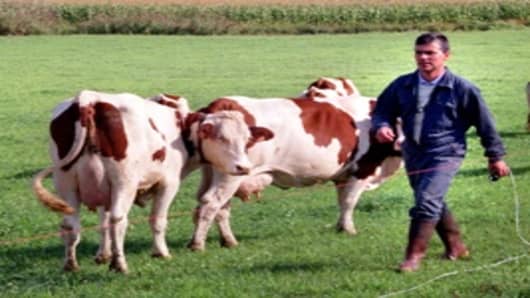After burning through $1 million in savings and seeing no end to their losses, dairy farmers Jake and Lori Slegers figured they didn't have much choice — they had to kill the cows.
So one day last summer their sons tagged all 1,571 cows, loaded them onto trailers at their farm south of Fresno, Calif., and watched them rumble away to a slaughterhouse.
Lori Slegers said her husband came into the house and broke down. "He said it was the hardest thing he ever had to do," she said. "Luckily, my boys could do it."
Growing demand in developing nations drove up milk prices when times were good, and dairy farmers expanded their herds. But the global recession hurt exports and left farmers with too much milk on their hands.
Milk processors cut the price they were willing to pay farmers, in many cases below what it cost to produce milk.
In the past year, hundreds of farmers have come to the same conclusion as the Slegers: The only way to raise prices is to reduce the supply, and that means killing cows.
In some cases, whole herds have been turned into hamburger. In others, farmers have kept their best producers and sent the rest to slaughter.
The Slegers turned to an industry-run program called Cooperatives Working Together, or CWT, which pays farmers going out of business to kill — rather than sell — their cows and help remaining dairy operations by reducing the milk supply.
Until this year, the 6-year-old program had paid for about 275,000 dairy cows to be slaughtered. This year alone, it has paid for more than 225,000 to be killed.


